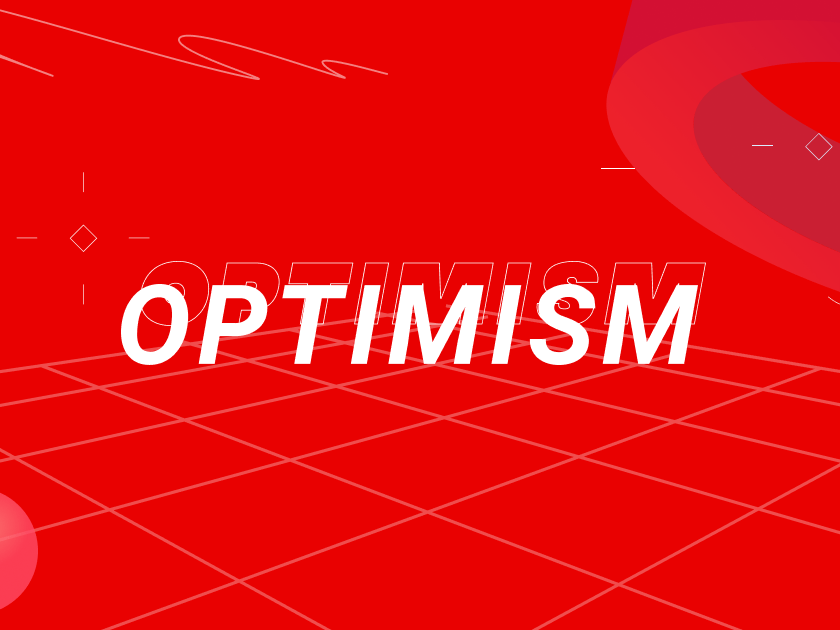Latest News
- Crypto Exchange Upbit Triggers Explosive Rally for Wallet-Focused Altcoin After Adding Support
- While Markets Dip, Your Career Can Moon: 10 Web3 Jobs Open Now
- Aavegotchi NFT gaming community votes to migrate to Base, sunset Polygon deployment
- Ethereum Co-Founder Outlines Long-Term Goals for Improved Communication
Current Price
The current price of OP is $0.67744
Introduction
The emergence of Optimism (OP) as a Layer-2 scaling solution for Ethereum presents a significant development in the landscape of decentralized finance.
By utilizing optimistic rollups, Optimism enhances transaction efficiency while mitigating gas fees, therefore addressing some of the most pressing scalability issues facing the Ethereum network.
Its ability to integrate effortlessly with existing smart contracts offers considerable advantages for developers and users alike.
However, the true potential of Optimism remains to be fully realized, prompting a deeper examination of its key features and future implications within the broader Ethereum ecosystem.
Quick Overview
- Optimism (OP) is a Layer-2 scaling solution for Ethereum that enhances transaction efficiency using optimistic rollups.
- It offers significantly lower transaction fees and increased throughput, effectively addressing Ethereum’s congestion issues.
- The platform is highly compatible with existing Ethereum smart contracts, facilitating an easy transition for developers.
- Optimism’s fraud-proof system ensures secure transaction processing while maintaining a decentralized environment.
- Future developments include potential integration with zk-rollups to further enhance scalability and security.
Overview of Optimism (OP)
Optimism (OP) is a prominent layer-2 scaling solution designed to enhance the efficiency of Ethereum transactions. By leveraging a technology known as optimistic rollups, Optimism aims to markedly reduce transaction costs and increase throughput, addressing the scalability challenges that have historically plagued the Ethereum network.
This solution operates by processing transactions off-chain while retaining the security guarantees provided by the Ethereum mainnet. The underlying mechanism involves bundling multiple transactions into a single batch, which is then submitted to Ethereum for verification.
This process minimizes the computational load on the main chain, allowing for faster transaction finality and a more efficient use of network resources. Optimism’s architecture is particularly notable for its compatibility with existing Ethereum smart contracts, facilitating a seamless shift for developers looking to optimize their decentralized applications (dApps).
Furthermore, Optimism employs a unique fraud-proof system, which allows for the detection and resolution of any discrepancies in transaction processing, ensuring that the integrity of the system is maintained.
As Ethereum continues to evolve, Optimism positions itself as a vital component in the broader landscape of blockchain scalability solutions, with the potential to markedly enhance user experience and network performance.
Key Features of Optimism
Optimism (OP) stands out as a Layer 2 scalability solution designed to enhance Ethereum’s throughput while maintaining security and decentralization.
Its inherent EVM compatibility guarantees seamless integration with existing Ethereum applications, allowing developers to leverage the benefits of reduced transaction costs and faster processing times.
These key features position Optimism as an essential player in the ongoing evolution of blockchain technology.
Layer 2 Scalability Solution
Utilizing advanced Layer 2 technology, Optimism enhances Ethereum’s scalability by considerably reducing transaction costs and increasing throughput. This innovative solution leverages optimistic rollups, which enable the execution of smart contracts off-chain while maintaining the security of the Ethereum mainnet. As a result, users experience faster transactions without sacrificing decentralization.
The key features of Optimism’s Layer 2 scalability solution can be summarized as follows:
- Cost Efficiency: Transaction fees are considerably lower compared to Layer 1, making it economically viable for users, particularly for microtransactions and decentralized finance (DeFi) applications.
- Increased Throughput: Optimism supports a higher number of transactions per second (TPS), alleviating congestion on the Ethereum mainnet and providing a smoother user experience during peak usage.
- User-Friendly Experience: With minimal changes required for dApp developers, Optimism enables seamless integration and onboarding, fostering a more accessible environment for both developers and end-users.

EVM Compatibility and Integration
A notable advantage of the Optimism protocol lies in its robust EVM (Ethereum Virtual Machine) compatibility, which allows for seamless integration with existing Ethereum-based applications. This compatibility is pivotal, as it enables developers to migrate their dApps to the Optimism layer with minimal friction, preserving their original codebases while benefiting from enhanced scalability and reduced transaction costs.
Optimism employs an innovative approach known as optimistic rollups, which maintain the security of the Ethereum mainnet while offloading transaction processing. This architecture guarantees that dApps can execute transactions off-chain, greatly increasing throughput without compromising on security.
In addition, the protocol’s compatibility with standard Ethereum tooling, such as Remix and Truffle, facilitates a familiar development environment, streamlining the shift for developers.
Moreover, the integration of EVM compatibility allows for the utilization of existing Ethereum smart contracts, encouraging a diverse ecosystem of applications to flourish on Optimism. As a result, projects like Uniswap and Synthetix have successfully deployed on this layer, demonstrating the protocol’s potential in enhancing user experiences while maintaining a high degree of decentralization and security.
This strategic alignment with Ethereum’s infrastructure positions Optimism as a leading solution in the domain of Layer 2 scalability.
Advantages of Layer 2 Solutions
Scalability remains a critical challenge in blockchain technology, making Layer 2 solutions essential for enhancing network efficiency. These solutions address fundamental limitations of Layer 1 protocols, enabling faster transaction processing and reduced fees while maintaining the security and decentralization of the underlying blockchain.
The advantages of Layer 2 solutions are multifaceted:
- Increased Throughput: Layer 2 solutions can process thousands of transactions per second (TPS) compared to the limited TPS of Layer 1 networks. This is achieved through various mechanisms, such as rollups and state channels, which aggregate multiple transactions into a single one.
- Lower Transaction Costs: By offloading transactions from the main blockchain, Layer 2 solutions considerably decrease gas fees. This affordability enhances user experience and encourages broader adoption of blockchain applications.
- Interoperability: Many Layer 2 solutions are designed to be compatible with existing Layer 1 blockchains, allowing seamless interaction between various platforms. This interoperability fosters a more inclusive ecosystem, encouraging developers to create diverse applications.
Impact on Ethereum Ecosystem
The integration of Layer 2 solutions has profoundly transformed the Ethereum ecosystem, enhancing its capacity to handle the growing demands of decentralized applications (dApps) and user transactions.
With the introduction of Optimism and similar frameworks, Ethereum’s scalability has markedly improved, addressing the notorious congestion and high gas fees that have plagued the network.
Optimism utilizes optimistic rollups, a technology that processes transactions off-chain while maintaining security through Ethereum’s base layer. This approach not only facilitates faster transaction speeds but also reduces costs, making dApps more accessible to users.
As a result, developers are increasingly incentivized to build on Ethereum, fostering innovation and expanding the ecosystem.
Moreover, the adoption of Layer 2 solutions encourages a more inclusive environment, allowing smaller projects to thrive by lowering entry barriers.
The synergy between Layer 1 and Layer 2 creates a robust infrastructure, capable of supporting a diverse range of applications, from DeFi to NFTs.
Ultimately, this evolution reflects Ethereum’s commitment to scalability and user experience, positioning it to remain a leading platform in the blockchain space, while also attracting institutional interest and investment.

Comparison With Other Solutions
With the proliferation of Layer 2 solutions, Optimism competes with other notable frameworks such as Arbitrum, zkSync, and Polygon, each presenting unique methodologies and advantages.
Optimism utilizes optimistic rollups, enabling faster transaction speeds and lower fees by assuming transactions are valid unless proven otherwise. This approach contrasts with zkSync, which leverages zero-knowledge proofs to guarantee transaction validity, offering enhanced security but potentially higher computational costs.
Key distinctions between these Layer 2 solutions include:
- Transaction Finality: Optimism’s model allows for quicker transaction finality, while zkSync may involve longer confirmation times due to the complexity of zero-knowledge proofs.
- Security Model: Arbitrum and Optimism share a similar security model based on Ethereum’s consensus, while zkSync introduces advanced cryptographic guarantees that may appeal to security-focused projects.
- Ecosystem Integration: Polygon boasts a diverse range of scaling solutions, making it a versatile choice for developers, whereas Optimism focuses on seamless integration with Ethereum’s existing infrastructure.
Ethereum Layer 2’s Comparison Table
Our expert team here at Trade Wise have researched the most popular Ethereum layer 2 protocols and created a comparison table so you can quickly see how they stack up against each other.
We collected this data in June 2024 so it may change over time.
This table contains all the data you need to make an informed comparison of how the most popular layer 2 blockchains perform and the strengths and weaknesses of each.
Trade Wise ETH Layer 2 Comparison Table
| Layer 2 | Tokens | Mainnet | Type | Focused on | Launch Year | TPS | Estimated Gas (USD) |
|---|---|---|---|---|---|---|---|
| Polygon | MATIC, POL | Ethereum | Sidechain, zk-rollups | DeFi, Web3, NFTs, dapps | 2017 | 65,000 | $0.0005 |
| Arbitrum | ARB | Ethereum | Optimistic rollups | DeFi, Web3, NFTs, dapps | 2021 | 40,000 | $0.10 |
| Optimism | OP | Ethereum | Optimistic rollups | DeFi, Web3, NFTs, dapps | 2021 | 2,000 | $0.20 |
| Metis | METIS | Ethereum | Hybrid rollups | DeFi, Web3, NFTs, dapps | 2021 | 4,000 | $0.03 |
| ImmutableX | IMX | Ethereum | Zk-rollups | Games, NFTs | 2018 | 9,000 | $0.002 |
| Mantle | MNT | Ethereum | Optimistic rollups | DeFi, Web3, NFTs, dapps | 2023 | 1,000 | $0.15 |
| Stacks | STX | Bitcoin | Parallel chain | Dapps, Ordinals | 2021 | 300 | $0.50 |
Future Potential and Developments
As the blockchain landscape evolves, the future potential of Optimism (OP) appears promising, particularly in its capacity to enhance Ethereum’s scalability and usability.
Leveraging Layer 2 solutions, Optimism aims to alleviate congestion on the Ethereum mainnet by facilitating faster transaction speeds and lower fees, which are critical for widespread adoption of decentralized applications (dApps).
The upcoming developments in Optimism’s ecosystem, such as the anticipated integration of zk-rollups and further enhancements to its protocol, indicate a commitment to increasing throughput and security.
Additionally, the collaboration with various projects and developers to create a robust infrastructure positions Optimism as a key player in the Layer 2 space.
Future upgrades also include governance mechanisms that empower OP token holders, potentially leading to a more decentralized and community-driven development process.
As the Ethereum network shifts to a full proof-of-stake model, the synergy between Ethereum and Optimism could reveal new functionalities and innovations.

Frequently Asked Questions
How Can I Buy Optimism (Op) Tokens?
To acquire Optimism (OP) tokens, one must create a cryptocurrency wallet, select a reputable exchange offering OP, complete the necessary verification processes, and execute a buy order using a preferred cryptocurrency or fiat currency.
What Wallets Support Optimism (Op)?
Several wallets support Optimism (OP) tokens, including MetaMask, Trust Wallet, and Coinbase Wallet. These wallets enable users to manage their assets securely while facilitating seamless interactions with decentralized applications on the Optimism network.
Is Optimism (Op) Secure for Transactions?
Evaluating the security of Optimism (OP) involves evaluating its underlying technology, smart contract integrity, and established protocols. Its adoption of Ethereum’s security features enhances transaction reliability, though inherent risks remain in decentralized systems, necessitating user vigilance.
Can I Stake My Optimism (Op) Tokens?
Yes, you can stake your Optimism (OP) tokens. Staking allows users to earn rewards by participating in network security and governance, thereby contributing to the ecosystem’s overall health while potentially generating passive income through staking incentives.
What Are the Fees Associated With Using Optimism (Op)?
The fees associated with using Optimism (OP) typically include transaction fees, which vary based on network congestion and gas prices, as well as potential withdrawal fees when moving tokens back to the Ethereum mainnet.
Wrapping Up
To summarize, Optimism (OP) represents a significant advancement in Ethereum’s scalability efforts through its innovative use of optimistic rollups.
By enhancing transaction efficiency and reducing costs, it effectively addresses critical limitations of the Ethereum mainnet.
The seamless integration of existing smart contracts fosters a dynamic ecosystem of decentralized applications, positioning Optimism as an essential player in the ongoing evolution of blockchain technology.
Continued developments in this area will likely further solidify its impact on the broader Ethereum landscape.

